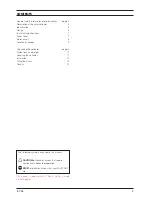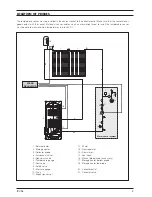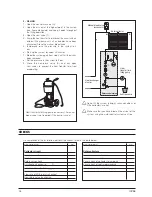
ICV08
12
Assembly
The solar collector must be fitted by specialist personnel.
Use only the assembly material supplied with the solar
collector. The supporting framework and all masonry or
brickwork fixing points must be checked by a person
expert in static loading, and must be suitable for the
nature of the installation site.
Static load
The solar collector must only be installed on roofs or
frames that are strong enough to support its weight. The
strength of the roof or frame must be verified on site by a
person expert in static loading before the solar collector
is installed. During this process, it is important to verify
the suitability of the supporting frame to hold the screw
fasteners that fix the solar collector in place. An expert in
static loading must verify that the entire frame complies
with relevant standards, especially in areas liable to
snow and areas exposed to high winds. Conditions
(gusts of wind, formation of wind vortices, etc.) at the
point where the solar collector is to be installed must be
carefully considered since these can increase the loads
on the supporting structure.
Lightning protection
The metal piping of the solar heating circuit must be
connected to the main potential compensation bar by a
(yellow-green) copper wire (H07 V-U or R) of at least 16
mm2. If a lightning conductor system is already installed,
the solar collectors may be connected to the existing
system. Alternatively, the solar collector piping may be
connected to ground via a ground wire sunk into the
earth. Ground wires must be sunk outside the house.
The ground wire must be connected to the potential
compensation bar through a wire of the same diameter.
Water connections
If flexible pipes are not used to connect the solar
collectors, the piping must be fitted with expansion
joints (U-type expansion joints, flexible hoses) to absorb
thermal expansion. Provided adequate expansion joints
are used, up to 6 solar collectors may be connected
in series. Make sure that the seal rings are correctly
positioned in their seats. When tightening a fitting with
a pipe wrench or spanner, always hold the opposite
fitting steady with a second tool to avoid damaging the
absorber.
b
All pipes in the water circuit must be insulated in
conformity to relevant standards.
Lagging and insulation must be protected against
damage by the weather and birds and animals.
Angle of collectors / General
Solar collectors are designed to be installed at angles of
between 20° (minimum) and 65° (maximum).
Make sure that the bleed and vent valves of the collectors
remain open while the collectors are being installed.
Take care to protect all fittings, connections, bleed and
vent valves against dirt and dust etc.
In installations which serve primarily to produce domestic
hot water in the summer, install the collectors facing from
east to west at an angle of between 20 and 60°. The
ideal orientation is southwards, at an angle equal to the
latitude of the location minus 10°.
If the system sustains the greatest thermal load in the
winter (as in systems that combine domestic hot water
production with central heating), install the collectors
facing south (or south-east or south-west) at an angle
greater than 35°. The ideal orientation is southwards, at
an angle equal to the latitude of the location plus 10°.
Flushing and filling
For safety reasons, only fill the system when the sun is
not shining.
In areas liable to frost, fill the circuit with a 40% glycol
solution for solar panels.
b
The anti-freeze solution must be mixed with water
prior to filling the system.
b
Take care if you flush the system out, because any
trapped water may freeze if the circuit is not filled
immediately with anti-freeze.
GENERAL INSTRUCTIONS
INSTALLATION
Содержание ZENITH INSET
Страница 15: ......
















